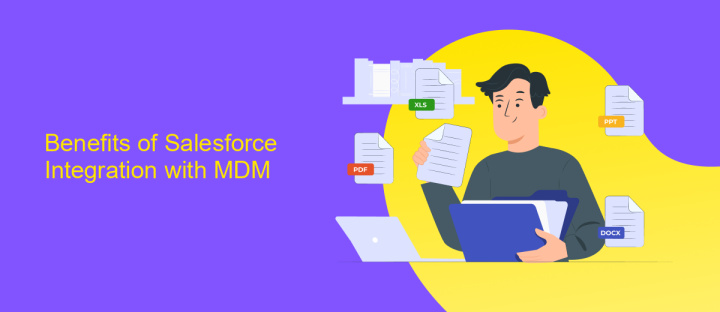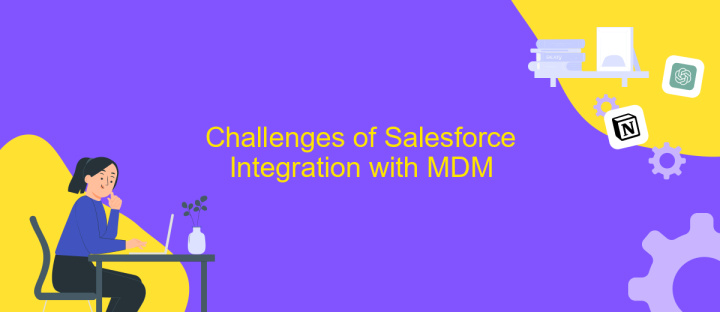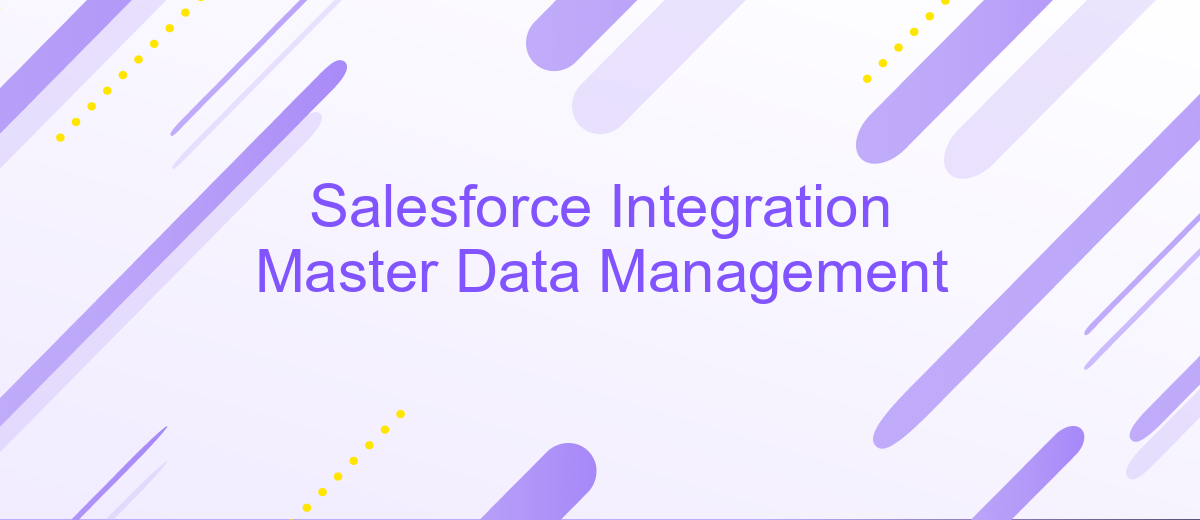Salesforce Integration Master Data Management
In today's data-driven world, effective Salesforce integration with Master Data Management (MDM) is crucial for ensuring consistent, accurate, and reliable information across your organization. This article explores the key benefits, strategies, and best practices for integrating Salesforce with MDM, enabling businesses to enhance data quality, streamline operations, and drive informed decision-making. Discover how to harness the full potential of your data assets through seamless integration.
Introduction
In today's fast-paced business environment, integrating Salesforce with Master Data Management (MDM) systems has become crucial for organizations aiming to maintain data consistency and accuracy. Salesforce, being a leading Customer Relationship Management (CRM) platform, often requires synchronization with various data sources to ensure that all customer information is up-to-date and reliable. By implementing MDM, businesses can consolidate data from disparate systems into a single, authoritative source, thereby enhancing decision-making processes and operational efficiency.
- Improved data quality and accuracy
- Enhanced customer insights
- Streamlined business processes
- Reduced data redundancy
- Increased compliance and governance
Integrating Salesforce with an MDM solution involves several steps, including data mapping, data cleansing, and establishing data governance protocols. This integration not only helps in maintaining a unified view of customer data but also supports advanced analytics and reporting capabilities. As organizations continue to prioritize data-driven strategies, the synergy between Salesforce and MDM will play a pivotal role in achieving business objectives and driving growth.
Benefits of Salesforce Integration with MDM

Integrating Salesforce with Master Data Management (MDM) offers numerous benefits that enhance business operations and data quality. One of the primary advantages is the improvement in data accuracy and consistency across various departments. By synchronizing data from Salesforce with an MDM system, organizations can ensure that all customer information is up-to-date and uniform, reducing the risk of errors and duplications. This leads to better decision-making and more efficient marketing and sales strategies.
Another significant benefit is the streamlined data integration process, which can be facilitated by services like ApiX-Drive. ApiX-Drive allows businesses to automate data transfers between Salesforce and their MDM systems without the need for extensive coding or manual intervention. This not only saves time but also minimizes the potential for human error. Additionally, the seamless integration enhances data governance and compliance, ensuring that all data handling adheres to industry standards and regulations. Overall, integrating Salesforce with MDM systems using tools like ApiX-Drive can significantly boost operational efficiency and data reliability.
Challenges of Salesforce Integration with MDM

Integrating Salesforce with Master Data Management (MDM) presents several challenges that organizations must navigate to achieve seamless data synchronization and consistency. These challenges can impact the efficiency and effectiveness of the integration process, necessitating careful planning and execution.
1. Data Quality Issues: Ensuring high-quality data is crucial for successful integration. Inconsistent, duplicate, or incomplete data can lead to errors and misalignment between Salesforce and MDM systems.
2. Complex Data Mapping: Mapping data fields between Salesforce and MDM can be complex due to different data models and structures. This requires thorough understanding and precise configuration.
3. Scalability Concerns: As organizations grow, the volume of data increases, making it challenging to maintain performance and scalability in the integration process.
4. Security and Compliance: Ensuring data security and compliance with regulations such as GDPR can be difficult, especially when integrating sensitive customer information.
5. System Downtime: Synchronizing data between systems can lead to downtime, affecting business operations and user experience.
Addressing these challenges requires a strategic approach, including robust data governance, comprehensive testing, and continuous monitoring to ensure the integration remains efficient and effective over time. Organizations must invest in the right tools and expertise to overcome these hurdles and achieve a successful Salesforce and MDM integration.
Best Practices for Salesforce Integration with MDM

Integrating Salesforce with Master Data Management (MDM) can streamline your data processes, ensuring consistency and accuracy across your organization. To achieve optimal results, it's crucial to follow best practices that enhance data quality and integration efficiency.
Firstly, establish clear data governance policies. This involves defining data ownership, data quality standards, and protocols for data updates. Consistent data governance helps maintain the integrity of your integrated systems.
- Ensure consistent data formats across systems to avoid discrepancies.
- Implement robust data validation rules to catch errors early.
- Regularly audit and cleanse data to maintain high quality.
- Use middleware solutions to facilitate seamless integration.
- Train your team on data management best practices and tools.
Finally, continuous monitoring and improvement are essential. Regularly review your integration processes and data quality metrics to identify areas for enhancement. By adhering to these best practices, you can ensure a successful Salesforce and MDM integration that supports your business goals.


Conclusion
In conclusion, integrating Salesforce with Master Data Management (MDM) systems is a crucial step for organizations aiming to maintain a single source of truth for their data. This integration ensures that data across various platforms is consistent, accurate, and up-to-date, thereby enhancing decision-making processes and operational efficiency. By leveraging robust integration tools and platforms, businesses can seamlessly synchronize their Salesforce data with MDM systems, reducing the risk of data discrepancies and improving overall data governance.
One such tool that can greatly facilitate this integration is ApiX-Drive. ApiX-Drive offers a user-friendly interface and powerful functionalities that enable smooth data flow between Salesforce and MDM systems without the need for extensive coding knowledge. By utilizing ApiX-Drive, organizations can automate data synchronization, streamline workflows, and ensure that their data remains reliable and accessible. Ultimately, effective Salesforce integration with MDM systems, supported by tools like ApiX-Drive, empowers businesses to harness the full potential of their data assets.
FAQ
What is Salesforce Integration Master Data Management (MDM)?
Why is MDM important for Salesforce Integration?
How can I automate the integration of master data into Salesforce?
What are the challenges associated with Salesforce Integration MDM?
How do I ensure data security during Salesforce Integration MDM?
Apix-Drive is a simple and efficient system connector that will help you automate routine tasks and optimize business processes. You can save time and money, direct these resources to more important purposes. Test ApiX-Drive and make sure that this tool will relieve your employees and after 5 minutes of settings your business will start working faster.

